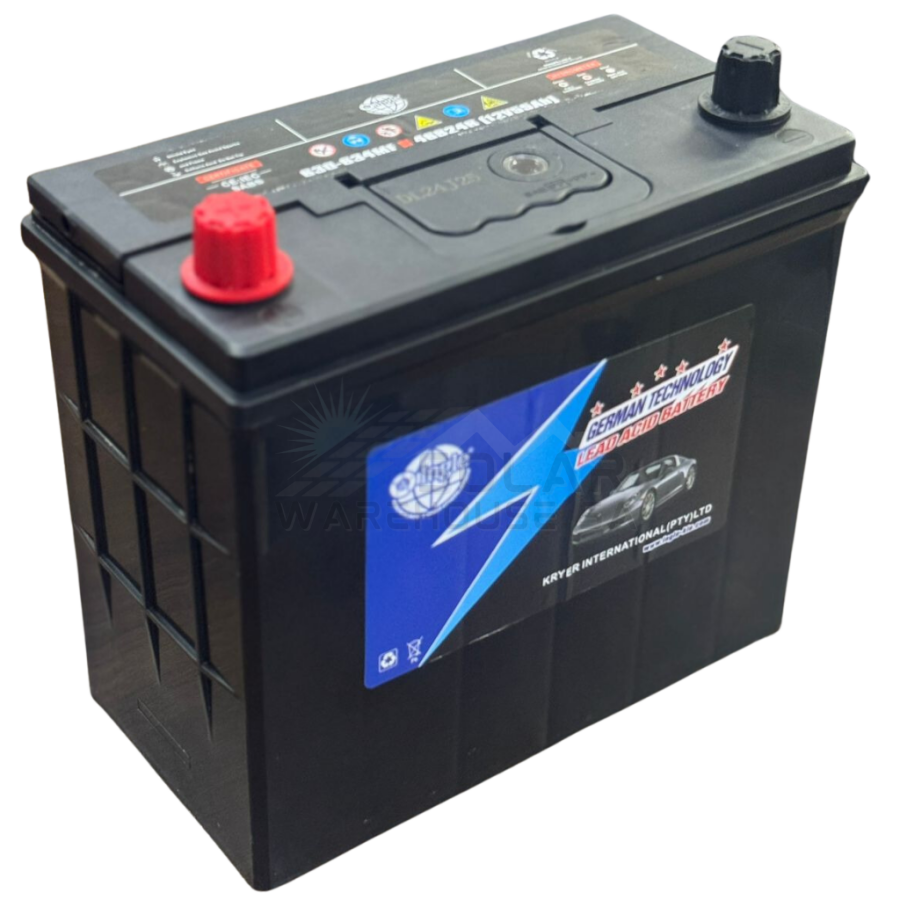The car battery is one of the most important components of a vehicle. Without it, starting the engine or powering the electrical systems becomes impossible. However, maintaining optimal battery voltage is crucial for ensuring the longevity and performance of the battery. Understanding voltage levels and how they affect your car can help you avoid inconvenient breakdowns and costly repairs. This article provides essential tips for maintaining optimal car battery voltage and ensuring your vehicle remains in good working condition.
Understanding Car Battery Voltage
The Basics of Battery Voltage
Car batteries typically operate at a voltage of 12 volts. This voltage is standard for most vehicles and is vital for powering various electrical systems. A fully charged car battery will typically measure around 12.6 volts to 12.8 volts. When the engine is running, the alternator charges the battery, and the voltage may increase to around 13.7 to 14.7 volts. Understanding these voltage levels is crucial, as a significant drop can indicate a problem with the battery or charging system. Keeping the battery charged and ensuring that it operates within the correct voltage range is essential for reliable performance.
Factors Affecting Voltage Levels
Several factors can affect the voltage levels of a car battery. Temperature changes, for instance, have a significant impact on battery performance. In cold weather, batteries can lose their charge more quickly, while high temperatures can lead to evaporation of the battery’s electrolyte. Age is another crucial factor. As batteries age, their ability to hold a charge diminishes, leading to lower voltage levels. It is vital to be aware of these factors so that you can take proactive steps to maintain optimal voltage levels in your car battery.

Recognizing Signs of Low Voltage
Difficulty Starting the Engine
One of the most common signs of low battery voltage is difficulty starting the engine. If you notice that the engine is cranking slowly or if there are repeated attempts to start without success, this could indicate insufficient voltage levels. A healthy battery should provide enough power for a strong crank. Persistent starting issues should prompt immediate attention to the battery’s voltage and overall health. Ignoring these signs can lead to complete battery failure and unexpected breakdowns, potentially leaving you stranded.
Dimming Lights and Electrical Issues
If you observe dimming headlights or flickering dashboard lights, this can also be a warning sign of low battery voltage. These electrical issues arise when the battery is unable to supply the necessary power to the vehicle’s systems. Dim lights, especially during idle, can indicate that the battery isn’t functioning optimally. If the electrical systems start to behave erratically, it is wise to check the voltage and health of the battery. Addressing these issues early can help you avoid more serious problems down the line.

Essential Tools for Measuring Voltage
Using a Multimeter
A multimeter is a valuable tool that can help you accurately measure your car battery voltage. To use a multimeter, set it to the DC voltage setting and connect the red lead to the positive terminal and the black lead to the negative terminal of the battery. A healthy battery should read between 12.4 and 12.6 volts when the engine is off. If the reading falls below this range, it may be time to recharge or replace the battery. Regular voltage checks will help you stay informed about the health of your battery and make timely decisions to maintain optimal performance.
Battery Voltage Tester
In addition to a multimeter, a dedicated battery voltage tester is available. These testers are designed specifically for automotive batteries and can provide quick readings. Some testers also measure the battery’s cold cranking amps, which indicates its ability to start the engine in cold conditions. Using a battery voltage tester offers a more straightforward method for those who may not be familiar with operating a multimeter. By regularly utilizing these tools, you’ll be better equipped to manage your battery’s voltage levels effectively.

Tips for Maintaining Optimal Voltage Levels
Regular Charging and Maintenance
Regularly charging your battery is crucial for maintaining optimal voltage levels. If your vehicle is not used frequently, your battery may lose charge over time. Consider using a smart battery charger that maintains the battery’s charge without overcharging it. Additionally, frequent short trips may not allow your battery to fully recharge, so it’s beneficial to take longer drives occasionally to keep the battery in good shape. Establishing a regular charging routine will help prolong the life of your battery and ensure it provides reliable performance when you need it.
Cleaning Battery Terminals
Over time, battery terminals can accumulate corrosion, which can hinder performance and reduce voltage levels. Regularly inspect the terminals and clean them as needed. A mixture of baking soda and water can effectively remove corrosion. Apply this mixture to the terminals and scrub gently with a soft brush. After cleaning, rinse with water and ensure the terminals are dry before reconnecting. Keeping the terminals clean allows for optimal electrical flow, improving the efficiency of your battery and maintaining proper voltage levels.

Environmental Factors to Consider
Temperature Effects
Temperature has a significant impact on car battery performance and voltage levels. Cold temperatures can cause the battery to lose charge, leading to starting difficulties. On the other hand, extreme heat can cause the electrolyte inside the battery to evaporate, potentially leading to battery damage. To mitigate these effects, consider parking your car in a garage during extreme weather conditions. You may also want to invest in thermal wraps that provide additional insulation for your battery in colder climates. Understanding temperature influences helps you take proactive measures to protect your battery.
Humidity and Moisture Levels
High humidity can also affect battery performance. Excess moisture may lead to corrosion on battery terminals and connections. Keep your vehicle in a dry environment whenever possible, and routinely check for signs of condensation or moisture buildup around the battery. Installing a dehumidifier in the garage can also help regulate humidity levels. Proper ventilation and humidity control will help maintain the battery’s health and support optimal voltage levels.
Routine Battery Inspections
Checking Age and Condition
Regular inspections of your battery can help you catch potential issues before they become serious. Check the age of the battery; most lead-acid batteries have a lifespan of approximately three to five years. If your battery approaches this age with no signs of voltage issues, it may be wise to consider replacement. In addition to age, look for visible signs of damage or leaks. Inspecting the battery casing and terminals regularly ensures that you can identify issues before they impact performance or cause complete battery failure.
Keeping Records of Maintenance
Keeping a detailed record of battery maintenance can be invaluable. Document any voltage readings, cleaning activities, and changes, such as replacement dates. This history will help you recognize patterns in your battery’s performance and can serve as a reference for making future maintenance decisions. Having this information readily available can assist in troubleshooting and help you stay proactive regarding battery care and replacements.

Knowing When to Replace Your Car Battery
Signs of a Failing Battery
Recognizing signs of a failing battery is critical for preventing unexpected breakdowns. Low voltage readings, difficulty in starting the vehicle, dim lights, or frequent electrical issues can all point to a dying battery. If you consistently experience low voltage despite proper maintenance, it may be time to consider replacing your battery. Keeping a close eye on these signs can save you from being stranded and ensure reliable performance for your vehicle.
Seeking Professional Help
When in doubt about your battery’s condition, consult with a professional mechanic. They can perform comprehensive diagnostic tests to assess battery performance and determine whether replacement is necessary. Taking advantage of professional expertise ensures that you make informed decisions regarding your battery’s health and longevity. Don’t wait until issues arise; proactive assessments can extend your battery’s life and improve overall vehicle performance.
Conclusion
Maintaining optimal car battery voltage is essential for the performance and reliability of your vehicle. By understanding the importance of battery voltage, recognizing signs of low levels, and implementing effective maintenance practices, you can significantly enhance battery health. Regularly check battery voltage, clean terminals, and charge your battery as needed. Additionally, be aware of environmental factors and conduct routine inspections to prevent potential issues.
By following these essential tips, you will promote a healthy battery and enjoy a smoother driving experience. Knowing when to replace your battery and seeking professional assistance when necessary can further prevent inconvenient breakdowns. Embracing proactive care and attention to your car battery will yield numerous benefits, ensuring your vehicle remains in optimal condition. Take the time to understand and care for your battery; it will reward you with reliable performance for years to come!

Leave a Reply